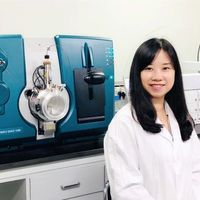 Drug discovery and development is a complicated and lengthy process, one that necessitates a great deal of financial, labor, and time investment. Yet drug development experiences a high attrition rate, as putative compounds fail to deliver the desired efficacies, or researchers discover that they pose unacceptable risks to human health. ADMET (absorption, distribution, metabolism, elimination, and toxicity) testing characterizes promising pharmacological compounds, identifying both those with potential and those with major disqualifying drawbacks.
Drug discovery and development is a complicated and lengthy process, one that necessitates a great deal of financial, labor, and time investment. Yet drug development experiences a high attrition rate, as putative compounds fail to deliver the desired efficacies, or researchers discover that they pose unacceptable risks to human health. ADMET (absorption, distribution, metabolism, elimination, and toxicity) testing characterizes promising pharmacological compounds, identifying both those with potential and those with major disqualifying drawbacks.
Mandy Xu is the Vice President of Drug Metabolism and Pharmacokinetics for Pharmaron, an international contract research organization headquartered in Beijing, China that is dedicated to providing drug research and development services for the life sciences industry. A graduate of Peking University, Xu currently leads a team of more than 200 individuals in providing in vitro ADMET solutions for researchers in the biotech and pharma industries. “My team mainly focuses on early discovery… to determine the...
Why is ADMET important for early drug discovery?
“ADMET testing is used to investigate all of the properties of a potential drug. My team provides ADMET services that encompass all phases of drug development, from early drug discovery using in vitro technologies, pre-clinical ADMET studies to support IND (investigational new drug) submission, all the way to clinical AME (absorption, metabolism, and elimination) studies for NDA (new drug application) submission,” said Xu. “Normally, people like to perform ADMET profiling on newly synthesized compounds as soon as possible. This way, they can do biological screening to evaluate efficacy and determine whether there is any potential for drug safety issues at the same time.”
According to Xu, ADMET profiling helps decrease potential risks during clinical development. “Because drug development failures can result from efficacy or safety issues, we know that ADMET profiling is necessary to determine whether or not a compound is suitable to proceed to the clinical stage. We use in vitro strategies to analyze and predict things like how well a compound could be absorbed in vivo and what the compound metabolism and excretion kinetics look like. We also have in vitro panels for assessing toxicity in order to evaluate whether a compound is cytotoxic or has potential liver and cardiac toxicity, and we use these results to predict toxicity within the human body.”
What assays do you use in your lab for ADMET profiling during early drug discovery?
Comprehensive and accurate ADMET profiling requires a diverse and precise toolbox. “We normally use more than one hundred assays in total,” said Xu with a chuckle, before explaining that these assays can be classified into five broad categories: solution properties, drug absorption and transport, metabolic stability and identification, drug-drug interactions, and in vitro toxicity.
Determining solution properties is the first step. “We have assays to look at parameters such as pKa values, partition coefficients, temporal stability, and the extent that a compound binds with protein or tissue,” continued Xu. “Once this is done, then we turn to assays meant to evaluate drug absorption and transport. We have a comprehensive drug transporter assay platform set up in our lab.”
When it comes to characterizing metabolic activity, Xu and her team use high-resolution mass spectrometry to elucidate the structure of any metabolites that may be present. Finally, a variety of cell- or enzymebased assays are available for evaluating drug-drug interactions and for toxicity evaluations against specific organs such as the liver and heart. “We can evaluate whether a compound is a substrate, inhibitor, or inducer against CYPs (cytochrome P450s), for example,” Xu said. These assays give Xu’s team flexibility and range for meeting the needs of researchers around the world, whether they want a preliminary screen or they wish to commission a custom battery of tests for comprehensive compound evaluation.
When you are designing or selecting an in vitro assay, what are the key parameters for ensuring that an in vitro assay provides in vivo applicable data?
While Xu’s team mainly uses in vitro assays to conduct ADMET profiling, they understand the necessity for the information provided to be relevant to in vivo situations and scenarios. Xu’s team cultures primary cells and primary cellular components, such as hepatocytes and liver- or intestine-derived microsomes, in order to investigate drug metabolism and stability.
An assay’s value to ADMET profiling is not only based on its in vivo relevance, but it also depends on the accuracy and reliability of the data that it generates. Basic instruments, such as pipettes, filters, and balances, are often overlooked because they can be found in nearly all life science laboratories, yet these are critical to this process. Xu’s team of scientists needs pipettes for liquid handling and transfer, and use both single- and multi-channel pipettes as throughput demands require. Using ergonomically-designed tools helps reduce the risk of repetitive strain injuries, promotes reliability, and decreases fatigue-induced discrepancies.
Balances are a big part of any biology or pharmacokinetic lab, and features such as static elimination and automatic leveling are a boon to maintaining accuracy. “Accurate balances are important for all of our assays,” said Xu. “We need to weigh out the solid compounds that we test, which often come in powder form, to create stock and working solutions.” Finally, Xu’s team uses a water purification system to prepare solutions and media for cell culture. The system reduces secondary contamination by using disposable bags to store purified water, while also reducing the time required for cleaning and maintenance.
Meet the Sponsor:
This article is brought to you by Sartorius. The Sartorius Group is a leading international partner of biopharmaceutical research and the industry. https://www.sartorius.com/
Interested in reading more?





